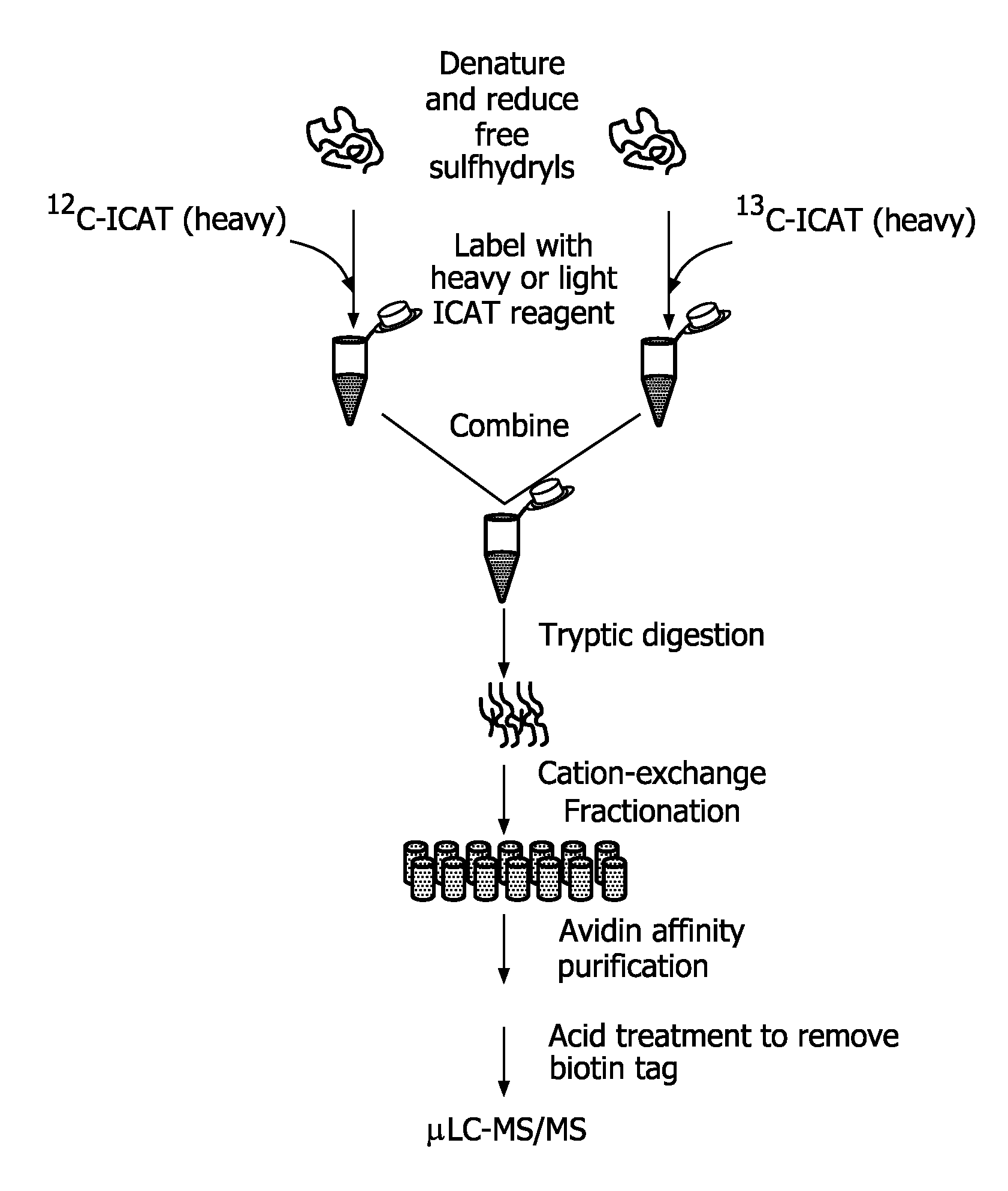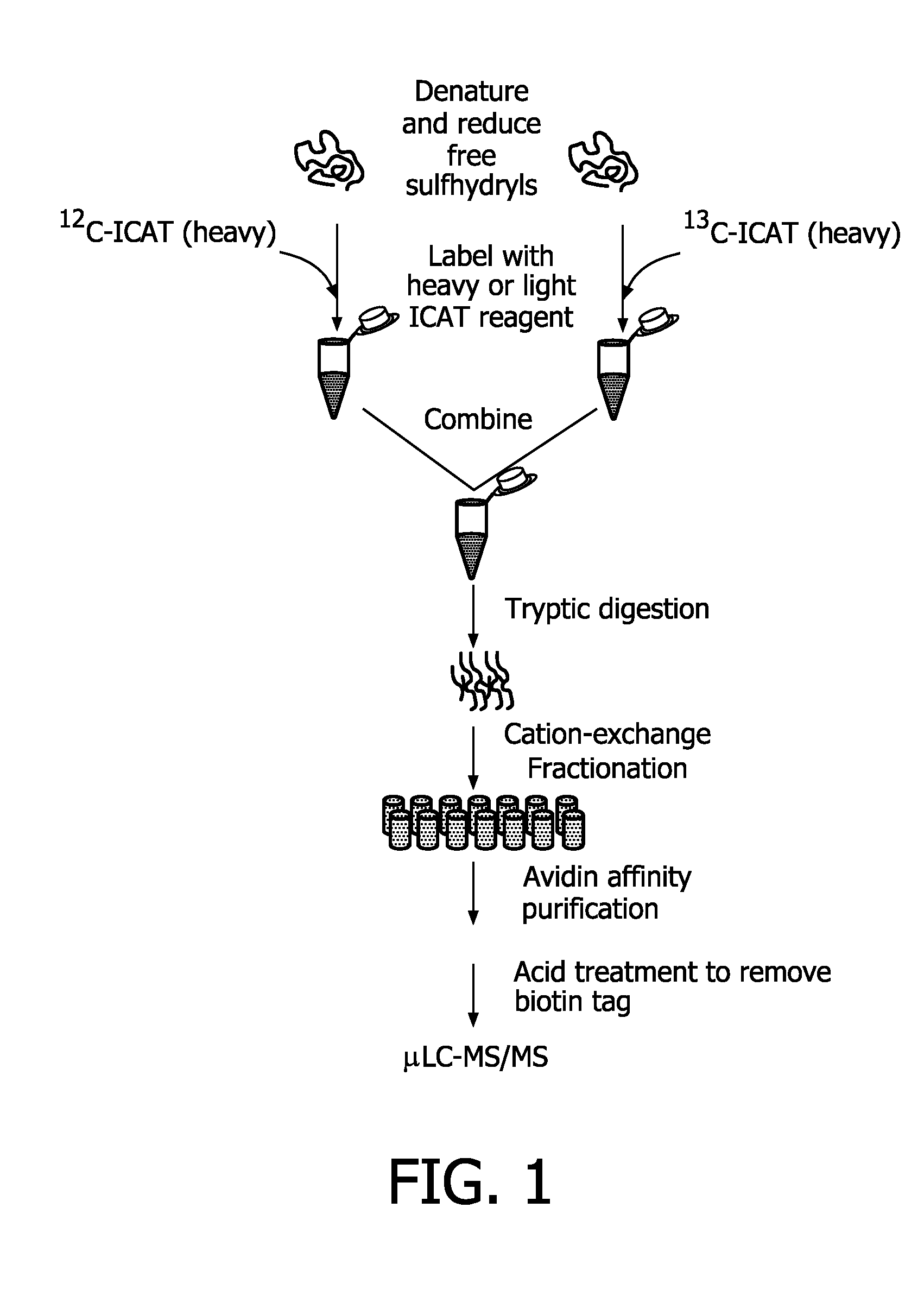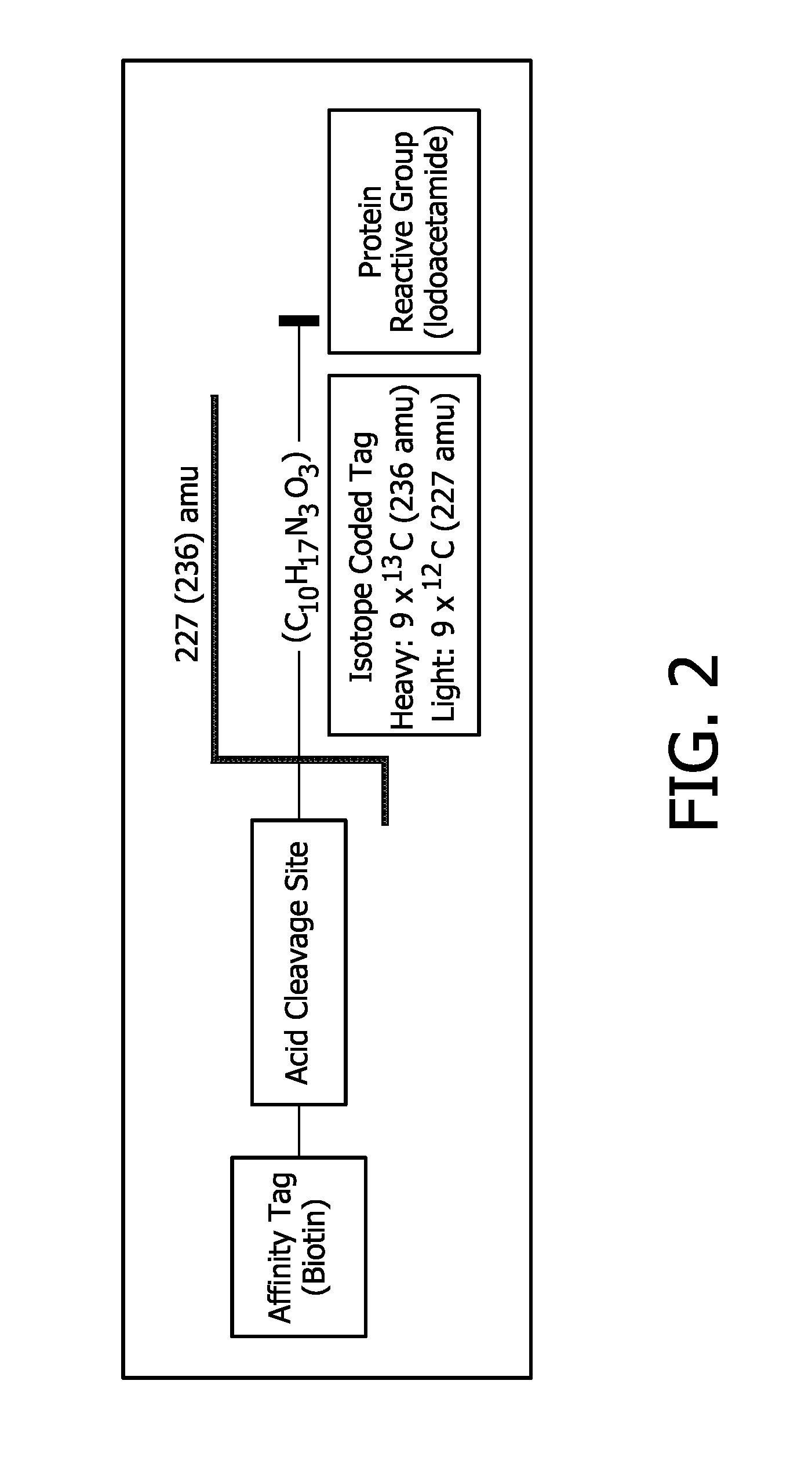Compounds and methods for double labelling of polypeptides to allow multiplexing in mass spectrometric analysis
a mass spectrometry and polypeptide technology, applied in the direction of peptide/protein ingredients, instruments, peptide sources, etc., can solve the problems of unsurpassed resolution of 2d-ge, lack of automation and reproducibility, and large resolving power for protein analysis and identification of highly complex mixtures, etc., to achieve the effect of increasing the multiplicity of combined sample detection
- Summary
- Abstract
- Description
- Claims
- Application Information
AI Technical Summary
Benefits of technology
Problems solved by technology
Method used
Image
Examples
example 1
Determination of Relative Expression Levels of Individual Peptides Using Isotopic and Isobaric Labelling
[0233]Using labelling reagents comprising unique combinations of isobaric and isotopic label components it is possible to determine the relative amount of an individual peptide within a mixture of labelled peptides with different isobaric and isotopic labelling combinations. This is exemplified by the following theoretical example. An internal peptide 8 samples (1 to 8) is labelled with a combination of isotopic labels a or b and isobaric labels A, B, C and D according to the scheme in Table 4.
TABLE 4Determination of relative concentrations of a labelled polypeptide in amixturepeptide12345678IsotopicaaaabbbblabelIsobaricABCDABCDlabelpooled1aA, 2aB, 3aC, 4aD, 5bA, 6bB, 7bC, 8bDsampleFirst1aA, 2aB, 3aC, 4aD5bA, 6bB, 7bC, 8bDseparationMSRatio23isotopiclabelSecond1aA2aB3aC4aD5bA,6bB,7bC,8bDseparationMS / MSRatio19371 865 isobariclabelIndividual1 / 20 ×9 / 20 ×3 / 20 ×7 / 20 ×1 / 20 ×8 / 20 ×6 / 20...
PUM
| Property | Measurement | Unit |
|---|---|---|
| Fraction | aaaaa | aaaaa |
| Concentration | aaaaa | aaaaa |
| Affinity | aaaaa | aaaaa |
Abstract
Description
Claims
Application Information
 Login to View More
Login to View More - R&D
- Intellectual Property
- Life Sciences
- Materials
- Tech Scout
- Unparalleled Data Quality
- Higher Quality Content
- 60% Fewer Hallucinations
Browse by: Latest US Patents, China's latest patents, Technical Efficacy Thesaurus, Application Domain, Technology Topic, Popular Technical Reports.
© 2025 PatSnap. All rights reserved.Legal|Privacy policy|Modern Slavery Act Transparency Statement|Sitemap|About US| Contact US: help@patsnap.com



